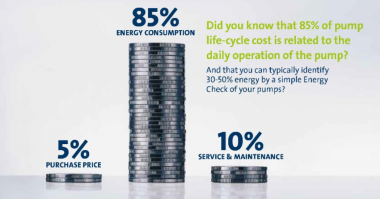It has been a tough couple of years for the water and wastewater treatment industry. Like other public works sectors, our industry has suffered the pains of reduced federal spending and municipal budget shortfalls, and the anxiety of not knowing when the economy will rebound.
After having hit a spending peak in 2008 and being further ‘stimulated’ with $6 billion in funding courtesy of the American Recovery and Reinvestment Act in 2009-2010, business took a dive in 2011, as evidenced by U.S. Census Bureau statistics (see graph). Construction spending for water dropped 16.5 percent below the same period in 2010; spending for sewage took a less severe loss at 8.1 percent. One could argue this was simply a return to ‘normal’ spending levels enjoyed pre-housing boom and stimulus program, but it appears that we may have finally hit a plateau in 2012. It may not be until 2013 that we start seeing a modest uptick in business, but all signs point in that direction given the magnitude of the challenges facing our industry from an aging infrastructure to population growth and stricter regulatory regimes.
The U.S. Conference of Mayors Water Council predicts that local governments could spend $2.5 – $4.3 trillion for public water and wastewater over a 20-year period (2009-2028). Critical to meeting these needs is access to affordable financing. Funding remains a major challenge facing communities that depend heavily on user fees and municipal bonds to build and maintain their water infrastructure.
Notwithstanding political resistance to increased water and sewage fees during these tough economic times, rates continue to rise as communities recognize the necessity to charge the true costs of providing these critical services. According to the 2011 Service Charge Index Survey conducted by the National Association of Clean Water Agencies, the average service charge increased 5.8 percent in 2011, while inflation increased by only 3.2 percent. This is a positive move toward achieving fiscal sustainability in managing our massive water and wastewater infrastructure.
The bond market continues to serve as the primary financing vehicle for water and wastewater capital infrastructure investments. It, too, took a hit in 2011, with bond issuance decreasing 31% compared to the prior year high of $433 billion. Here, too, is good news, with $220 billion in municipal bonds having been issued in the first seven months of 2012; a 56% increase from the same period in 2011.
Even with a rebounding bond market, we need to explore other funding streams. There may be hope on the horizon with the possible passage of the Sustainable Water Infrastructure Investment Act (H.R. 1802, S. 939) before Congress adjourns this year. This bi-partisan legislation, which WWEMA has aggressively pursued, could provide an additional $50 billion in funds over the next 10 years by eliminating federally imposed state volume caps for tax-exempt private activity bonds for water and wastewater projects.
Lastly, environmental regulations remain a significant driver for investments by municipalities and industry alike. WWEMA is tracking numerous ongoing regulations and providing input into the development of new regulations that will directly impact future equipment procurement decisions that benefit our members, the industry’s leading manufacturers of water and wastewater products and technologies.
These and other market trends will be explored in-depth in November at the WWEMA 104th Annual Meeting in Las Vegas. Details can be found at www.WWEMA.org.




Comments